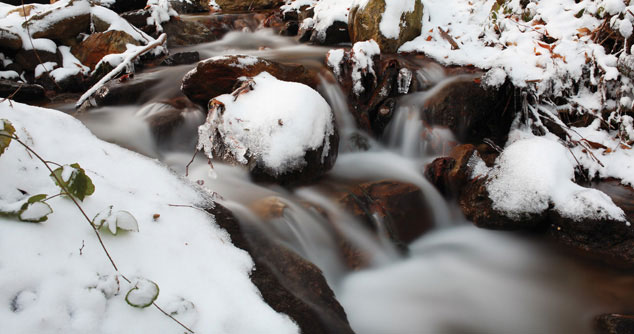The Basics of Water Garden Winterizing
5 DIY Steps to Cleaning Up Before Old Man Winter Comes to Visit. Performing these five simple steps can keep a pond, its equipment and its inhabitants safe all winter. Even the least hands-on watergardener can follow this do-it-yourself guide to water garden winterizing.
STEP 1 – Clean up
Fall is an ideal time to clean your pond. If you do it while the fish are still active, they are not likely to suffer any ill effects and will have a healthier winter environment. Some experts recommend removing up to 50 percent of the water during the cleaning process by using a pump or a pond vacuum to remove water and debris from the bottom. If you do this, don’t forget to add EasyPro Water Conditioner when refilling.
This is also an ideal time to remove and clean any equipment you won’t be using until spring. Ultraviolet lights should also be removed or insulated from the plummeting temperatures. Plants should be prepared or removed in preparation for colder months ahead.
STEP 2 – Keep leaves out
If you have trees near your pond, cover the pond with EasyPro Deluxe Pond Cover tent to keep leaves out of the pond. Leaves in a pond can lead to poor water quality conditions. You can also use Pond Netting to save a lot of work down the road of fishing out dead leaves from the water. Use poles, inner tubes or other objects to keep this netting above the water. If the net is on the water, it will sink into the water with the weight of the leaves and snow and be very difficult to work with.
STEP 3 – Fish food changes
As the water temperature begins to drop, the fish will become less active. Begin feeding your fish EasyPro Cold Water Food when the water temperature drops below 50°F. This specialty wheat germ based diet aids in digestion. When the water temperature drops below 39°F, stop feeding the fish, even on warm days during the winter, until water temperatures consistently maintain 39°F again. While it may seem hard to believe, the fish don’t need food in the cold temperatures in order to survive, and feeding them when the water is below 39°F can actually cause them harm.
STEP 4 – Keep a hole open
You must keep a hole in the ice throughout the winter for fish to survive. They must have enough oxygen to support life. Deadly gases, such as hydrogen sulfide gas, build up under the ice as the organic matter accumulated over the year decays and uses up available oxygen. If the pond freezes over completely, the lives of the fish are at risk. Use of aeration systems to keep water moving or de-icers work well for this.
If the pond should freeze over, don’t try to break a hole in the ice. The blows will cause shock waves to pass through the water, causing damage to soft tissue of your fish. Place a pot of boiling water on the ice and let it melt through. Tie a string or a rope onto the handle so you can retrieve your pot once it melts through.
Other critters, such as tadpoles, frogs, turtles and snails, will take shelter in the area around your pond. Some will hide in the pots of plants, in other safe places in the pond, or in the landscape near the pond. While these critters don’t need anything special from us to survive, do make sure that the variety of critter you have is winter-hardy. There are some tropical animals that can’t survive in the cold.
STEP 5 – Protect your equipment
Drain all water from any exterior piping, such as the autofill valve, to eliminate cracking or breaking from the eventual freezing. If you have a submersible pump, remove it from your system and place it in a bucket of water indoors to prevent the seals from cracking. Check your water level often and add water as needed to replace any that has evaporated. If you add more than one inch of water, be sure and use a dechlorinator and chloramine remover at the rate specified.
If you choose to leave waterfall and stream features running during the winter, it’s important to visually inspect the pond water level to ensure that winter freezes and thaws have not created a water leak or redirected the flow of water somewhere other than back to the pond. Also, make sure you keep snow from piling up too high on the pond, too, because the snow blocks sunlight.

